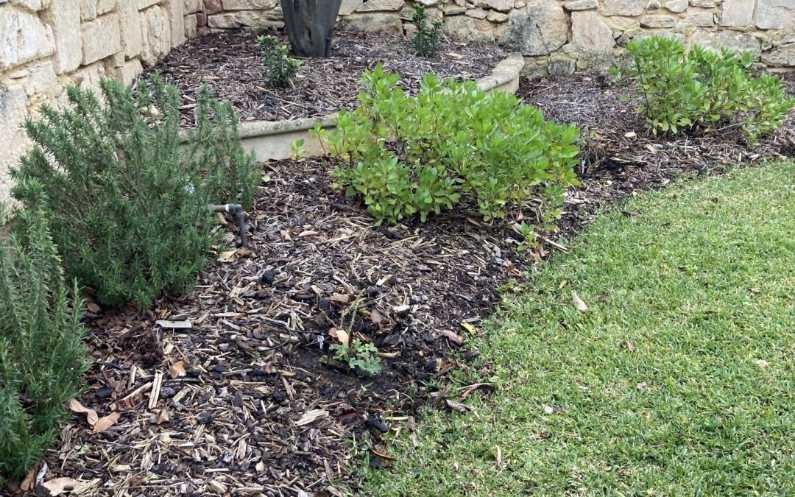Nothing gets in the way of a beautiful and healthy garden more than weeds. Controlling weeds is vital for the health of your plants, so it’s no surprise that those weeds in your garden have to go.
The first step in any garden care plan is to identify what you’re dealing with. If you don’t recognize the weeds correctly, it will lead to wrong treatment methods, costing you time and money.
While weeding takes a bit of work, we’ve created this blog to help ease this process for you by telling you exactly how to identify and control the most common garden weeds found in Perth.
Click to read what you'll find in this post
How To Identify And Get Rid Of The Most Common Garden Weeds Found In Perth.
1. Clover
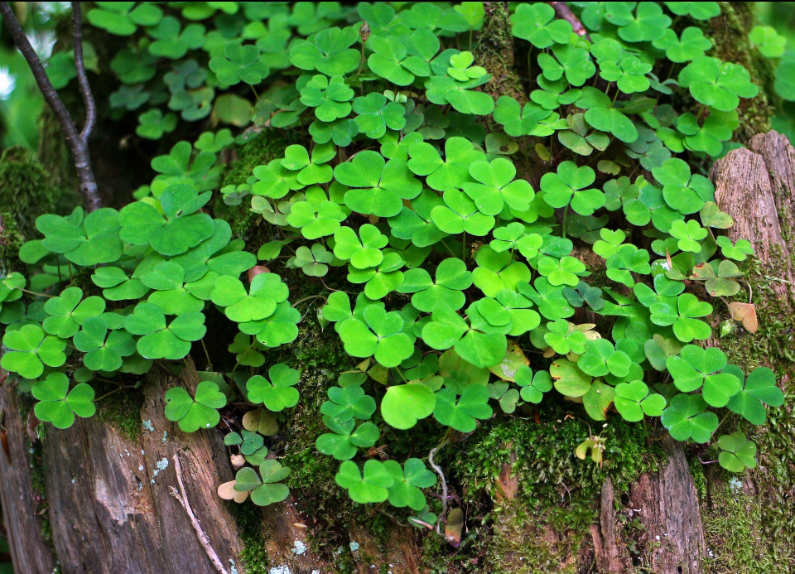
Clover is a type of broadleaf weed that grows low on the ground during hot weather.
The most common garden clover that you may deal with is white clover. It grows in patches and can get up to 8 inches tall.
Other common garden clover species include Red Clover, which has narrow leaves and can grow up to 20 inches, and Sweet Clover has yellow or white flowers.
If you know what to look for, clovers are extremely easy to identify.
It has leaves with three small teardrop-shaped leaflets with a white stripe that runs from one side to the other.
One patch can produce multiple flower heads, and each of them can grow to be 0.5 to 1.5 inches in diameter.
You can manually uproot clover when it’s still small by gently loosening the soil around the base with your fingers and plucking it.
For large clusters of clover, you can use broadleaf herbicides to do the job.
You can also use A.D.I.O.S., a non-toxic, odorless, and organic weed killer that is safe to use around kids and pets.
2. Bindii
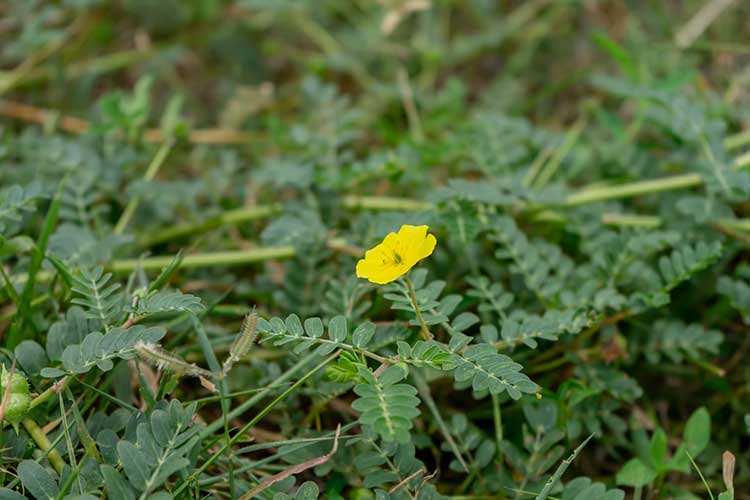
Bindii is a troublesome garden weed that is mainly found in the Perth metropolitan area.
It first emerges during the winter rains, typically in May, and produces seed capsules that are protected by sharp needle-like spikes. These seed capsules prick your feet if you walk barefoot and can be painful for you and your pets.
The best way to control this garden weed is to tackle it with appropriate herbicide while it is growing. Effective herbicides contain bromoxynil plus MCPA.
If you plan to manually remove this weed (in case of small infestations), make sure that you dig up the root to prevent regrowth.
3. Stinging Nettle
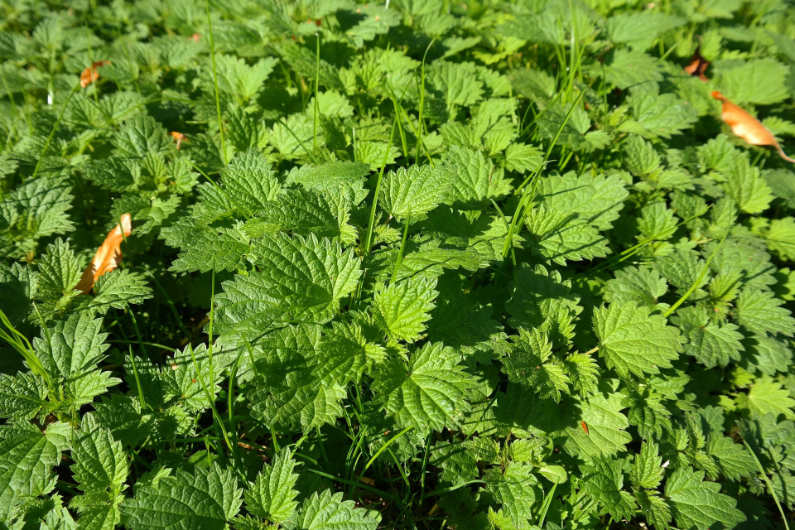
Stinging Nettle is one of the most uncomfortable garden weeds to deal with.
It has small fine needle hair that feels like tiny syringes that irritate and blister even when brushed lightly on bare skin. Nettles are not tough to identify, especially because most people have been stung by them at least once.
It thrives on nutrient-rich soil, so one good thing about finding them is that it indicates that your garden soil is relatively high in nutrients, especially phosphorus.
Stinging Nettle is green, oval-shaped with teeth lining the edge. It has square stems with tiny hairs and can grow up to 2 meters tall.
We recommend using gloves, fully covered clothing, and a spade when you handle them. Simply loosen the soil around the plant with a spade and grab the plant’s base and pull.
4. Soursob
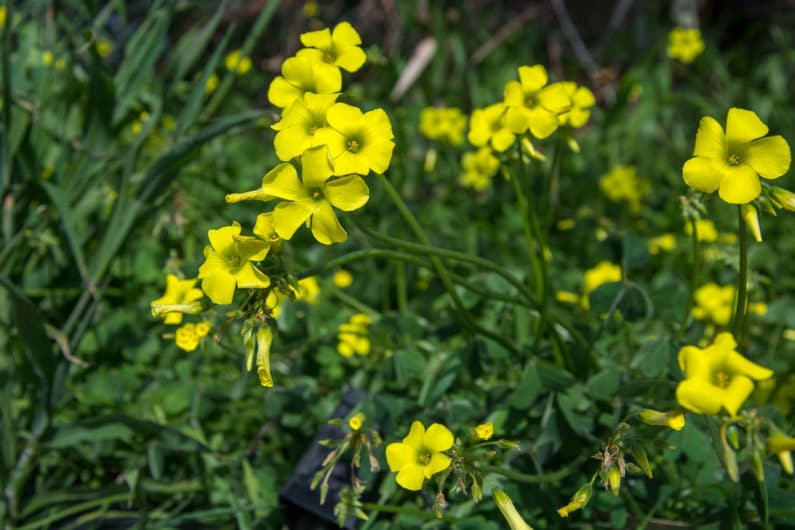
While you can identify bright yellow soursob flowers quite effortlessly, they are challenging to do away with.
Soursob is an almost hairless garden weed that begins its annual invasion during the winter season and grows from May to September.
Unlike the other garden weeds discussed above, Sournob can withstand the herbicide. While it is challenging to get rid of this plant, you can get it under control just before the weed starts to flower.
Simply weaken the roots by mowing over the plant and then pull them out manually.
Bulbils are bulb-like attachments to the roots that detach from the primary plant and produce a new soursob. It would be best if you did this before they flower because that is when it produces ‘bulbils,’ which leads to more weeds.
5. Dandelion
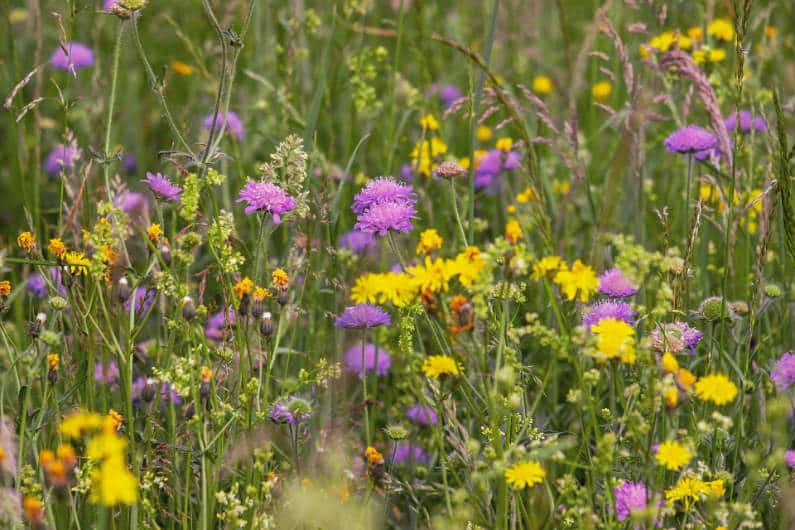
Dandelions are one of the easiest weeds to identify with a large rosette and a long stout taproot. Dandelions are bright yellow fluffy flowers that turn to white puffball of seeds when it’s ready to reproduce.
They grow between 2 to 18 inches tall, and their taproot ranges from 6 to 18 inches in length.
They are notoriously difficult to remove because their roots are long and can extend deep underground. If you don’t remove them the right way, they’ll grow right back and steal nutrients, water, and sunlight from your plants and can also harbor pests or diseases.
Dandelions have a hollow stem and produce milky fluid when you break the stem.
The leaves grow in a rosette arrangement, with the leaf edges pointing inwards. While multiple stalks can grow from a single plant, only one flowering head is on a single stalk.
While you can try to yank them out, it is not an effective long-term solution.
The best way to treat dandelion weeds is with herbicide.
If you’re concerned about the neighboring plants, you can try spraying the weeds with vinegar.
Removing weeds can be a tedious process, but we hope the description and images help you identify and get rid of these common garden weeds in your lawn.
If you need assistance in correctly identifying and controlling your garden weed, get in touch with us, and we’ll help you build a weed-free garden.

